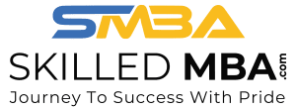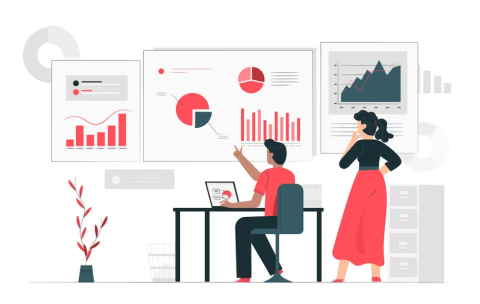Popular Instructors
All Financial Accounting Courses
Financial Modeling and Valuation – Crafting Financial Blueprints and Value Assessments
Financial Modeling and Valuation – Crafting Financial Blueprints and Value …
What you'll learn
Week 1: Introduction to Financial Modeling (4 Hours)
Session 1 (2 Hours): Basics of Financial Modeling
Introduction to Financial Modeling: Concepts and Applications
Overview of Financial Statements (Income Statement, Balance Sheet, Cash Flow Statement)
Building a Basic Financial Model in Excel
Session 2 (2 Hours): Best Practices in Financial Modeling
Spreadsheet Design and Best Practices
Ensuring Accuracy and Integrity in Financial Models
Basic Excel Functions and Tools for Financial Modeling
Week 2: Advanced Financial Modeling Techniques (6 Hours)
Session 3 (2 Hours): Cash Flow Projections and Forecasting
Techniques for Projecting Income Statement and Balance Sheet
Building a Cash Flow Statement from Projections
Sensitivity Analysis and Scenario Building
Session 4 (2 Hours): Advanced Excel Techniques for Financial Modeling
Advanced Functions and Formulas in Excel
Data Validation, What-If Analysis, and Goal Seek
Introduction to Macros and VBA for Automation
Session 5 (2 Hours): Financial Modeling for Decision Making
Case Studies: Financial Modeling in Mergers and Acquisitions, Project Finance, and Valuation
Analyzing Financial Models for Strategic Decisions
Week 3: Valuation Techniques and Applications (6 Hours)
Session 6 (2 Hours): Introduction to Valuation Methods
Overview of Valuation Techniques: DCF, Comparables, Precedent Transactions
Discounted Cash Flow (DCF) Valuation Model
Cost of Capital: WACC and CAPM
Session 7 (2 Hours): Comparable Company Analysis (CCA) and Precedent Transactions
Performing a Comparable Company Analysis
Precedent Transaction Analysis: Methodology and Application
Case Study: Valuation using CCA and Precedent Transactions
Session 8 (2 Hours): Real-world Valuation Challenges
Dealing with Uncertainty and Risk in Valuation
Valuation of Startups and Non-traditional Companies
Impact of Economic and Market Conditions on Valuation
Week 4: Practical Application and Capstone Project (4 Hours)
Session 9 (2 Hours): Integrating Financial Modeling and Valuation into Business Strategy
Strategic Implications of Financial Models and Valuations
Communicating Results: Making Effective Financial Presentations
Ethical Considerations in Financial Modeling and Valuation
Session 10 (2 Hours): Capstone Project and Course Wrap-Up
Group Project: Developing a Comprehensive Financial Model and Valuation for a Real or Simulated Company
Presentation of Capstone Projects
Course Summary and Pathways for Further Learning
Each session should include a mix of theoretical instruction, case studies, and hands-on exercises, primarily in Excel. The capstone project in the final week would involve applying all the learned concepts to a comprehensive financial modeling and valuation exercise, providing practical experience in the application of these skills. This structure ensures that MBA students not only acquire technical financial modeling and valuation skills but also understand how to apply these skills in real-world business scenarios.
Data Analytics and Statistical Analysis for MBA – From Data to Decisions: Advanced Statistical Techniques for MBAs
“Data Analytics and Statistical Analysis for MBA – From Data …
What you'll learn
Week 1: Introduction to Data Analytics and Basic Statistics (4 Hours)
Session 1 (2 Hours): Introduction to Data Analytics
Overview of Data Analytics in Business
Role of Data Analytics in Decision-Making
Introduction to Statistical Concepts
Session 2 (2 Hours): Basics of Descriptive Statistics
Measures of Central Tendency (Mean, Median, Mode)
Measures of Variability (Range, Variance, Standard Deviation)
Data Visualization Basics (Histograms, Box Plots)
Week 2: Exploratory Data Analysis and Inferential Statistics (6 Hours)
Session 3 (2 Hours): Exploratory Data Analysis (EDA)
EDA Techniques
Understanding Data Distributions
Introduction to Statistical Software (e.g., R, Python)
Session 4 (2 Hours): Probability and Probability Distributions
Basic Probability Concepts
Discrete and Continuous Distributions (e.g., Binomial, Normal)
Session 5 (2 Hours): Basics of Inferential Statistics
Sampling and Estimation
Hypothesis Testing Concepts
Introduction to Regression Analysis
Week 3: Advanced Statistical Techniques (6 Hours)
Session 6 (2 Hours): Linear Regression Analysis
Simple and Multiple Linear Regression
Interpreting Regression Output
Assumptions and Diagnostics in Regression
Session 7 (2 Hours): Time Series Analysis and Forecasting
Components of Time Series Data
Moving Averages, Smoothing Techniques
Introduction to ARIMA Models
Session 8 (2 Hours): Decision Trees and Clustering
Basics of Classification and Clustering
Introduction to Decision Trees
Basics of K-Means Clustering
Week 4: Application of Data Analytics in Business (4 Hours)
Session 9 (2 Hours): Data Analytics in Finance and Marketing
Case Studies in Financial Analytics
Market Analysis and Consumer Behavior Studies
Session 10 (2 Hours): Capstone Project and Course Wrap-up
Application of Learned Techniques to a Business Case
Group Project Presentation
Course Summary and Path Forward for Further Learning
Each session would ideally include a mix of lecture, discussion, and hands-on exercises using statistical software. The capstone project in the final session should be a comprehensive task that requires students to apply all the skills they've learned, ideally focusing on a real-world business scenario. This structure ensures that MBA students not only understand the theoretical underpinnings of statistical analysis but also how to apply these techniques in a business context.




